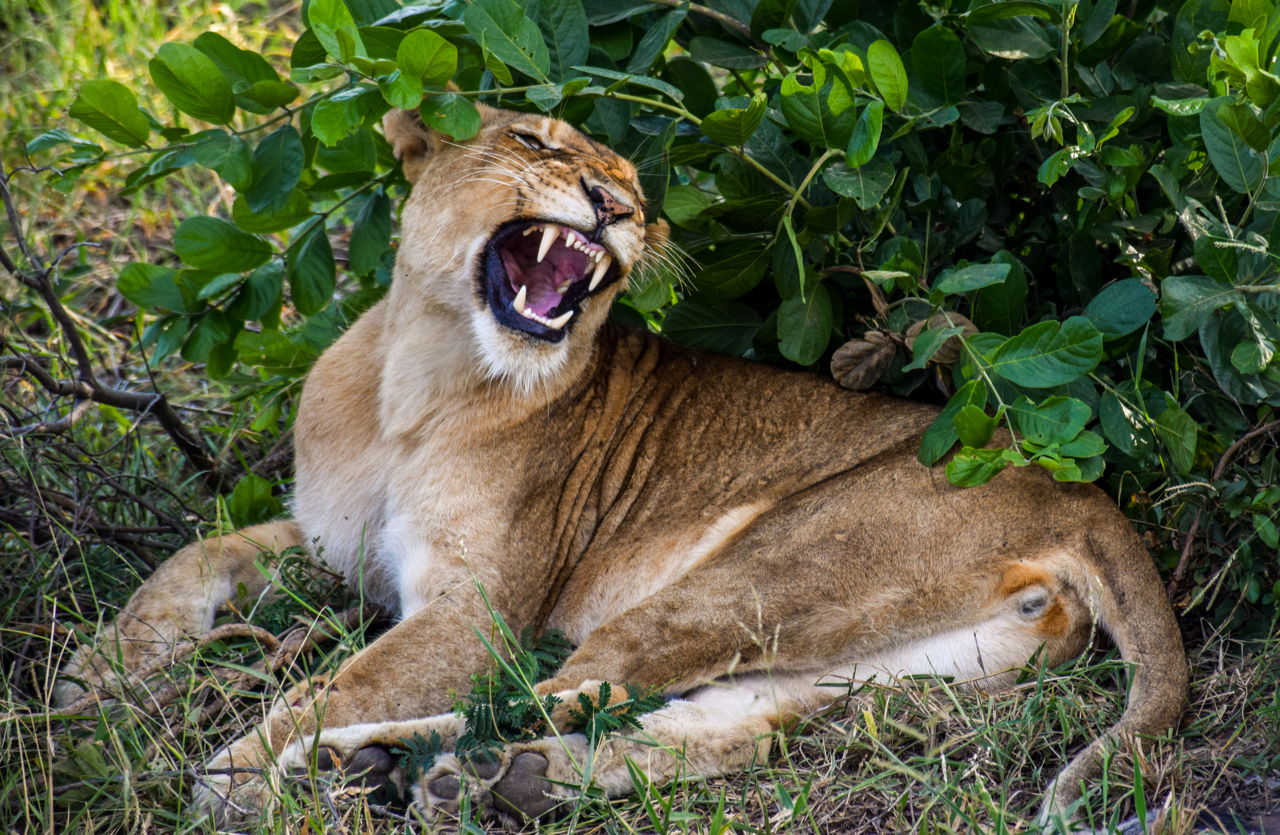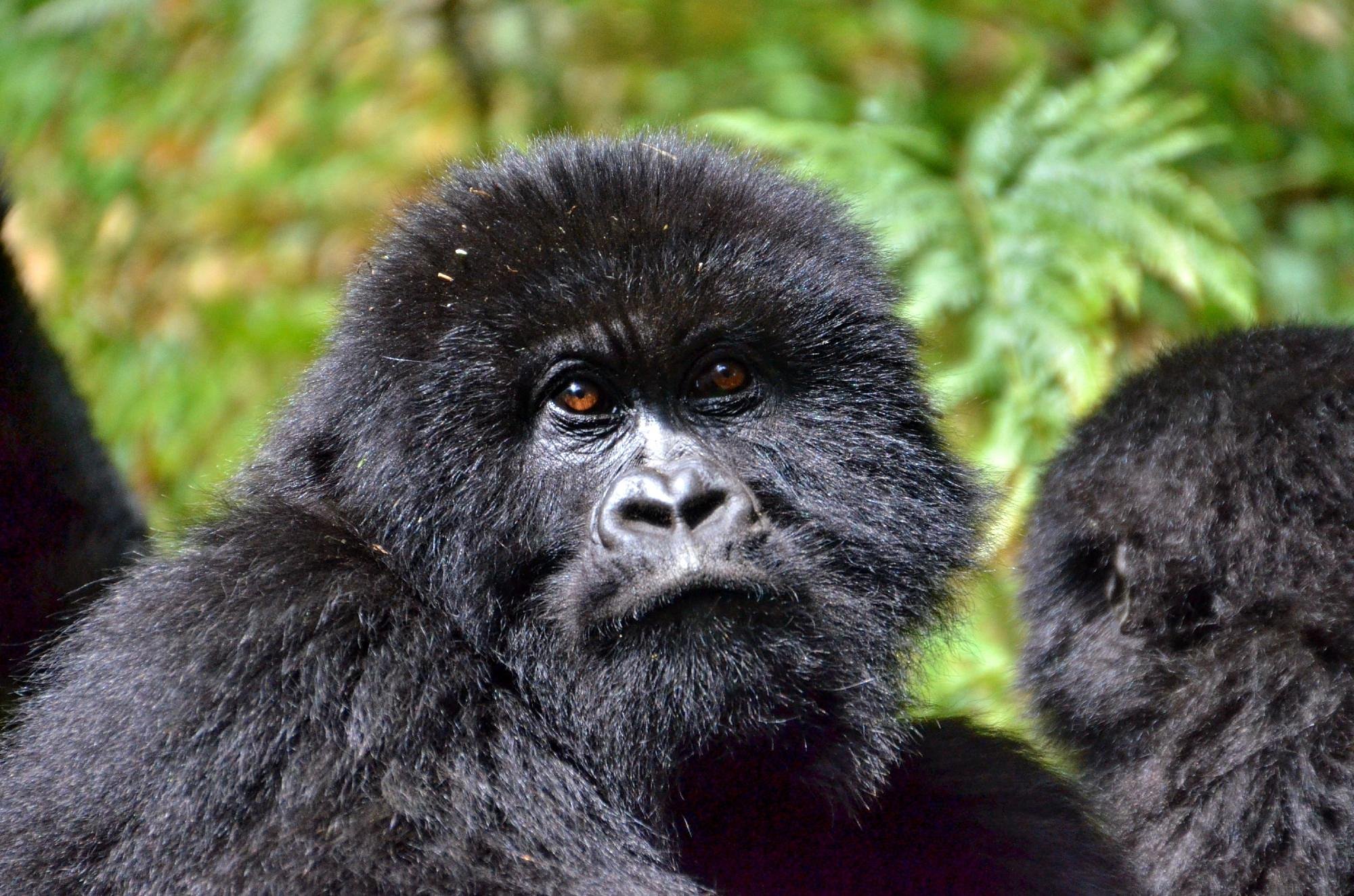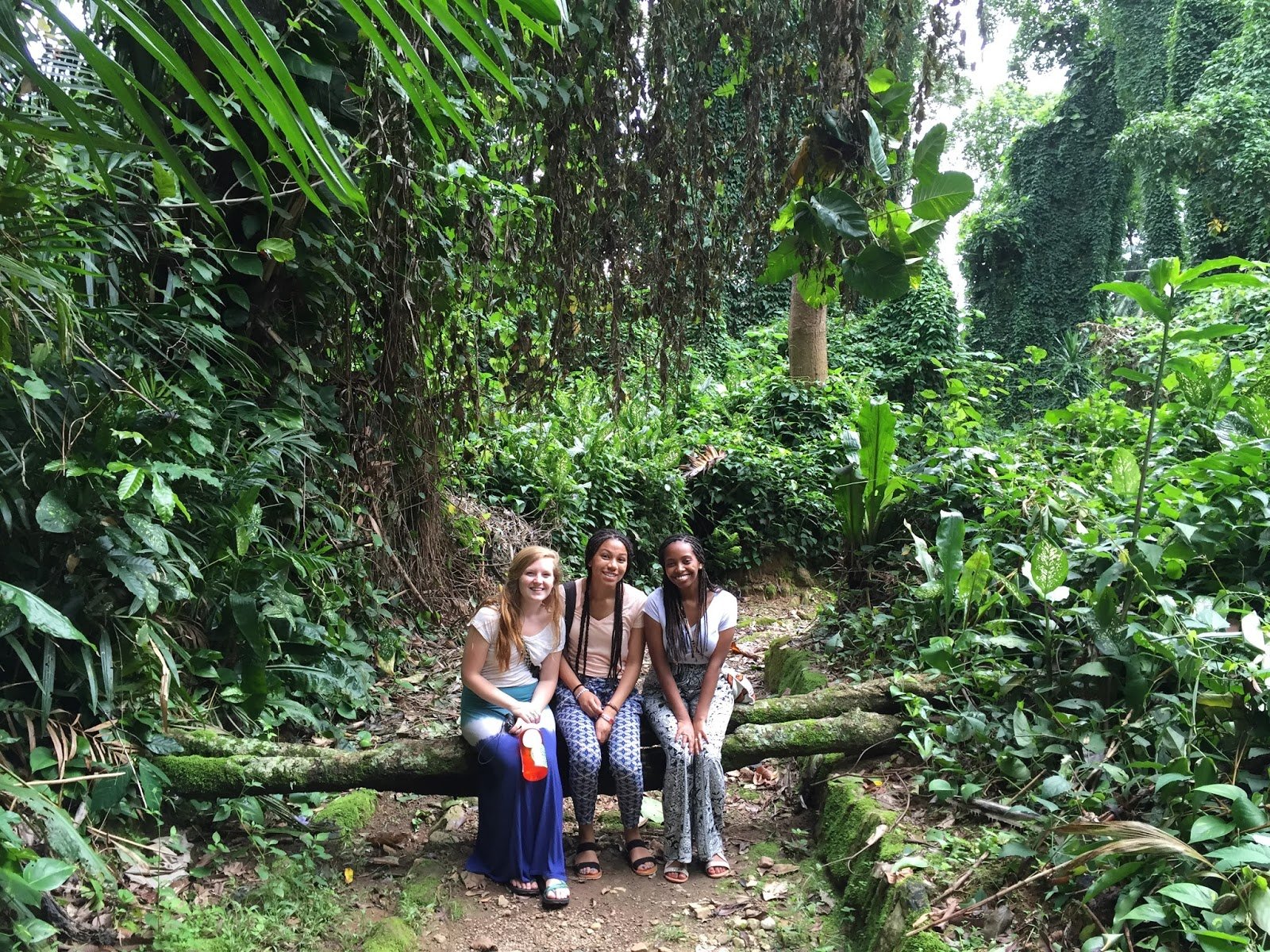Facts about the Mountain gorillas of Uganda & Rwanda
Prominence: Threatened species
Description:
A gorilla is an enormous tail-less ape which is covered with black hair. The type of gorilla found in Uganda is the mountain Gorilla (Gorilla gorilla berengei) and differs from the West African forest gorilla in size. From the three gorilla sub species in the world, the mountain gorilla is the largest and rarest and is remarkably the strongest, with a short trunk and a broad chest and shoulders.
Where to find mountain gorillas
This endangered species can be found in the Central African Republic, South western Uganda and in Rwanda. They are found in four national parks of Bwindi Impenetrable National park, Mgahinga Gorilla National park, Volcano National park and Virunga National park. Bwindi Impenetrable National park lies in South western Uganda on the edge of the rift valley and is a home of about 400 mountain gorilla species. Mgahinga Gorilla National park is located high in the clouds, at an altitude of between 2,227 meters and 4,127m and was created to protect the rare mountain gorillas inhabiting the dense forests.
Magnitude, population and life span of a mountain gorillas:
A Silver back normally stretches six feet tall when it is standing straight, balancing approximately four hundred to five hundred pounds. This makes it the largest great ape bigger than chimpanzees. The female gorillas are relatively lesser compared to the males and stand an average of about four to five feet, weighing about one hundred fifty to two hundred pounds. Following a census of mountain gorillas which was conducted in 2011 in Bwindi Impenetrable National Park, the confirms a minimum population of about 400 gorillas and the life span of Mountain gorillas is 53 years in captivity.
Reproduction
Well, females get matured at the age of seven years though they do not produce until they are ten years of age and one silver back mates with several females. The males usually mature later than females and are very strong enough to reproduce between fifteen and Twenty years of age, with young ones being breed year round. They breed at the age of 10 (females) with a gestation period of eight to nine months
Diet and Eating habits of Mountain gorillas:
Food preferences of mountain gorillas
The food of mountain gorillas vary by category and seasonality. The western low land gorilla (Gorilla gorilla gorilla) eats parts atleast 97 plant species with about 67 percent of their diet being fruits, 17 percent being leaves, stems and seeds and only 3 percent being caterpillars.
Food Intake and methods of collecting food
An mature male swallows more than 18 kilograms of vegetation per day and drink rarely in the wild because they eat delicious vegetation that is composed of almost half water as well as morning dew. They usually use their incredible strength to break apart vegetation and eat only the leaves, pith, stalk or roots of a particular plant. They do not overexploit an area for food where crop vegetation in a manner that allows for quick replenishment. In their diet, 86 percent is composed of leaves, 7 percent is composed of roots, 3 percent is composed of flowers and 2 percent is composed of snails and grubs. Mountain gorillas use their absurd strength to break apart vegetation and an adult can shred apart a whole banana tree to get the interior tender pith.
Senses of Mountain gorillas
Hearing
Brightness of mountain gorillas is always limited by dense flora, hearing is important for gorillas to locate another and to detect danger. They appear to reply to unusual noises that are not part of their normal activity.
Eye sight
Mountain gorillas have good vision which is used for finding and recognizing diet and to detect movement. Throughout the daytime, herbivores perhaps have color vision which is a useful adaption for finding ripening fruits in treetops.
Smell
They have got good intellect of smell and are very able to detect strong odors in the environment such as human sweat or the musk of an unknown gorilla. In most cases, males use females odor to determine her reproductive status.
Fears to the survival of mountain gorillas:
The main threat to these primates comes from forest clearance which comes as a result of human population struggles to earn a living in search of land for agriculture and competition for resources such as firewood. Since they are closely related to humans with similar anatomical and physical features it makes gorillas vulnerable to diseases which affect humans. If you are a tourist visiting the gorillas, you are instructed to keep their distance from the endangered gorillas.
Conservation efforts to mountain gorillas:
Active conservations
Active protection of mountain gorillas include frequent patrols in wildlife areas, which destroys poacher equipment and weapons, prompt law enforcement, census counts in regions of breeding and ranging concentration, strong safe guards for the limited habitant that animals occupy.
Community – based conservation
Community based preservation includes protection for involving the local community in the practice of conservation. The process seeks equity in meeting the needs of the people who stay with tourism resources and preserving the protected area as well. The local people need to be involved in verdict making process.
The future of mountain gorillas
It has been found out that many people now acknowledge that, to achieve success in any future conservation efforts of mountain gorillas, all stake holders must be involved. Since humans are very close to the proximity to gorillas, it is important that conservation accomplishment widely use rainforest resources.



